>> Many bright spots in Yen Bai's economic picture
>> Yen Bai strives to achieve economic growth target in 2024: Only discuss action, no retreat!
For Yen Bai - a mountainous province with strengths in agriculture, forestry and ecological development potential, the requirement to restructure the agricultural sector is consistently determined in the direction of improving quality, efficiency, added value, promoting rural economic development associated with sustainable new rural construction. It is expected that in 2025, Yen Bai will achieve a sector-wide growth rate of about 5.85%.
Although accounting for only 21.84% of the economic structure, with more than 70% of the population living in rural areas and mainly working in agriculture; nearly 60% of the workforce working in the fields of agriculture, forestry and fisheries; export turnover in 2024 accounting for over 37% of the total export turnover of the whole province, reaching over 160 million USD..., Yen Bai's agricultural sector is affirming its role as a solid "pillar" for the economy, contributing to job creation and ensuring livelihoods for the majority of people in agricultural and rural areas of the province.
Shifting to commodity production
Starting from a poor mountainous province with small and scattered agricultural production, Yen Bai is facing many challenges in productivity, quality and added value. Restructuring the industry means reshaping production areas, selecting key crops and livestock with competitive advantages, combining deep processing and product consumption according to the value chain. This is not only a solution to adapt to the market and climate change, but also a fundamental issue to increase people's income, promote agricultural and rural economic development and contribute to local economic growth.
Looking at the actual development of the agricultural sector, it is not difficult to recognize a strong transformation from traditional production to commodity production not only in lowland areas but also very clearly and effectively in highland districts when the potential and strengths of the region and locality have been and are being awakened. Upland taro in the poor district of Tram Tau is an example.
From a crop to fight hunger during crop shortages, Tram Tau upland taro has been planned to develop into a commodity production area with an area of up to nearly 700 hectares, becoming one of the locality's key agricultural products.
In Sang Pao village, Xa Ho commune, upland taro is the main crop, gradually replacing low-yield corn and rice fields with an area of over 20 hectares. The entire Sang Pao village has nearly 200 households, about 60% of which are poor households. Upland taro - the top economic crop at this time - is the salvation for many Mong families here to escape poverty.
A typical example is Mr. Cho A Lu's household. With an area of nearly 1 hectare of upland taro, yielding 5 tons of tubers, his family also has an income of nearly 100 million VND per year. In 2024, the whole Xa Ho commune has reduced the number of poor households by more than 50. Chairman of the People's Committee of Xa Ho commune Giang A Say said: "In addition to rice, upland taro is currently the economic crop with the best income for people in Xa Ho. Compared to rice - the traditional staple crop of the locality, the economic value that upland taro brings is actually two or even three times higher."
There is no doubt that upland taro - a native potato variety of Tram Tau district has become a valuable agricultural product as a local specialty. With a planting area of about 600 hectares, an average yield of 14 tons/ha, and an output of over 11,000 tons, upland taro is bringing in an economic value of over 200 billion VND per year for local farmers. Expanding the area, developing upland taro specialized growing areas associated with brand building and increasing the value of agricultural products, in 2025, Tram Tau aims to plant 1,000 hectares of upland taro, mainly concentrated in Ban Mu commune with 212 hectares, Xa Ho with 188 hectares, Ban Cong with 170 hectares, and the remaining communes planting from 35 to 110 hectares.
Developing specialized and concentrated areas
Implementing the Project on restructuring the agricultural sector in the period of 2021 - 2025, Yen Bai's agricultural sector has made efforts, promoted all advantages, joined hands with the people to carry out agricultural production activities in the direction of agricultural economic development. Yen Bai has built a sectoral plan, a plan for key agricultural and forestry products associated with promoting the potential and advantages of the province; at the same time, built, issued and synchronously implemented many resolutions, projects and policies to support production in the direction of concentrated and specialized commodity production, creating clean, high-quality and food-safe products; encouraged the development of specialized and concentrated agricultural production areas.
Regarding rice - the province's traditional staple food crop with about 42,600 hectares, the area of high-quality rice has been increasing and increasing rapidly in recent years, accounting for nearly 39%, equivalent to over 16,500 hectares. Yen Bai has formed a number of large intensive rice fields, focusing on commodities such as Muong Lo field of over 2,000 hectares, with an output of over 20,000 tons/year; Tu Le specialty sticky rice field of over 100 hectares, with an output of 450 tons/year; Dai Phu An - Dong Cuong field, Van Yen district of 600 hectares; Muong Lai, Vinh Lac, Lieu Do, Minh Xuan fields, Luc Yen district of nearly 500 hectares, with an output of 4,500 tons/year.
With many efforts to improve quality, Yen Bai has over 8,000 hectares of production applying SRI, 600 hectares applying IPM and some rice areas cultivated in the direction of nature. In particular, nearly 250 hectares have been certified and maintained production according to VietGAP standards; 56 hectares have been granted growing area codes. The tea area is stable with about 7,400 hectares, the output reaches over 68,000 tons/year, of which the output of high-quality fresh tea buds reaches about 21,000 tons. The concentrated and specialized production area reaches 5,000 hectares in the districts.
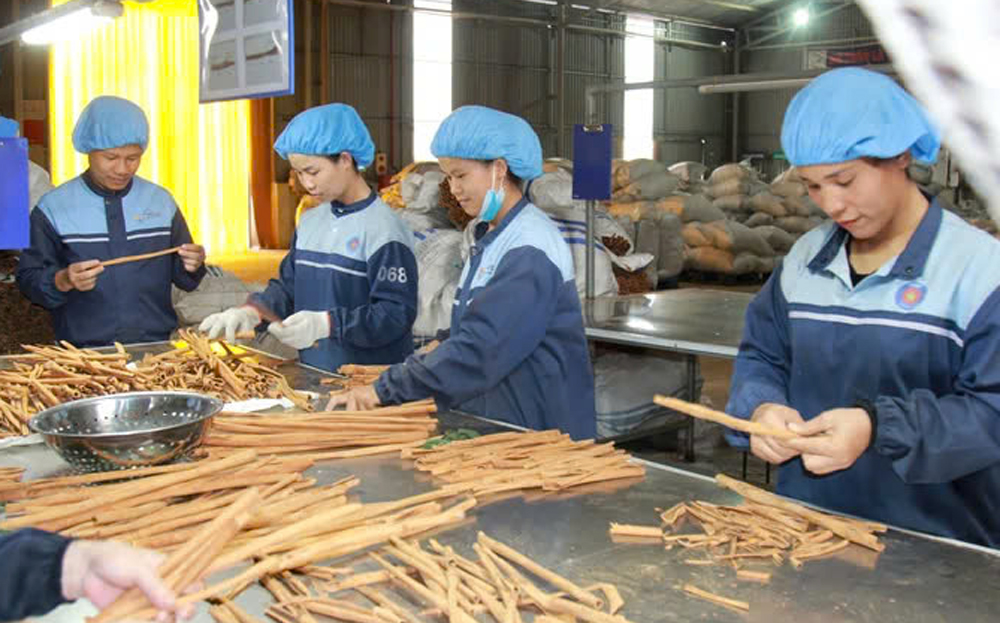
Workers of Son Ha Spices Company Limited process cinnamon.
Restructuring tea production areas associated with the processing industry, Yen Bai has built a highly intensive tea area, providing raw materials for processing black tea for export with an area of 2,500 - 3,000 hectares associated with processing facilities in traditional tea growing areas in Nghia Lo town and Van Chan district, with an average yield of over 15 tons/ha/year, and fresh tea bud output of 38,000 - 45,000 tons/year. High-quality green tea areas in lowland districts with some imported tea varieties such as Phuc Van Tien, Bat Tien... are planned for about 1,500 hectares. Up to now, the whole province has over 1,000 hectares of tea meeting organic, VietGAP, RA certification standards. The concentrated organic production area alone is 1,200 hectares, with an output of 2,000 tons/year; the tea area assigned a growing area code is nearly 400 hectares.
Also after many years of efforts, Yen Bai has restructured fruit growing areas towards improving quality, value and efficiency with a concentrated, specialized area of about 5,000 hectares, output of nearly 40,000 tons, concentrated in the districts: Mu Cang Chai 130 hectares, Van Chan 1,730 hectares, Van Yen 450 hectares, Tran Yen 600 hectares, Luc Yen 600 hectares, Yen Binh 1,330 hectares...
Of which, nearly 400 hectares are produced according to certified standards (VietGAP, ensuring food safety) and are granted a growing area code; production is organized in the direction of linking to form cooperatives, groups of households linking production and product consumption. In particular, the potential of soil and climate has allowed Yen Bai to develop an area of medicinal plants of over 4,000 hectares, with an output of nearly 11,000 tons/year. The province has also developed a mulberry area of nearly 1,300 hectares, linking and stably consuming products.
In particular, Yen Bai Mulberry Silk Joint Stock Company in Bao Dap commune, Tran Yen district has invested in a factory with a capacity of 150 tons of silk products/year, corresponding to the amount of cocoons purchased of 1,200 tons/year, implementing the purchase of cocoons for farming households.
The most exciting thing is cinnamon - one of the 10 main crops of Yen Bai with over 80,000 hectares, concentrated in Van Yen, Tran Yen, Luc Yen districts; the annual output of dried cinnamon bark reaches 22,000 tons, cinnamon essential oil is nearly 600 tons and over 70,000 m2 of cinnamon wood of all kinds, bringing in revenue worth over 1,000 billion VND for farmers in the province.
In fact, the planning and development of specialized and concentrated areas have been helping localities in the province to maximize agricultural advantages, develop typical products, thereby building brands and increasing competitiveness in the market. This ensures product output, reduces risks for farmers, and enhances the competitiveness of Yen Bai agricultural products. In the current period, when Yen Bai province is moving towards green transformation, the "supporting" role of agriculture is even more clearly affirmed.
Minh Thuy
Source: https://baoyenbai.com.vn/12/348721/Tai-co-cau-nong-nghiep-gan-voi-phat-trien-kinh-te-nong-thon---Lesson-1-Khang-dinh-vai-tro-tru-do-nen-kinh-te.aspx



![[Photo] The Government Standing Committee works with ministries and branches on the real estate market situation.](https://vphoto.vietnam.vn/thumb/1200x675/vietnam/resource/IMAGE/2025/5/24/e9b5bc2313d14c9499b8c9b83226adba)
![[Photo] Ho Chi Minh City holds funeral for former President Tran Duc Luong](https://vphoto.vietnam.vn/thumb/1200x675/vietnam/resource/IMAGE/2025/5/24/9c1858ebd3d04170b6cef2e6bcb2019e)





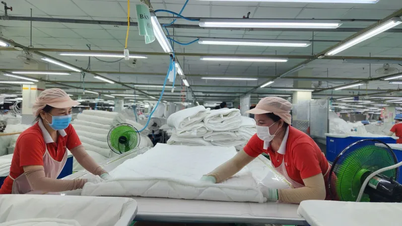
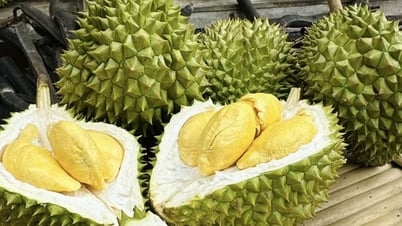

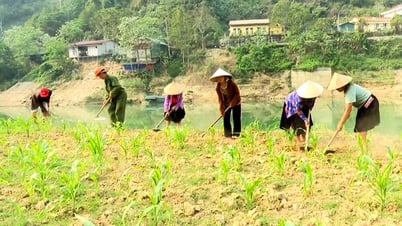


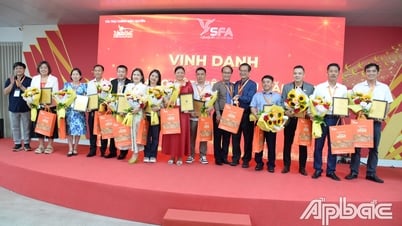






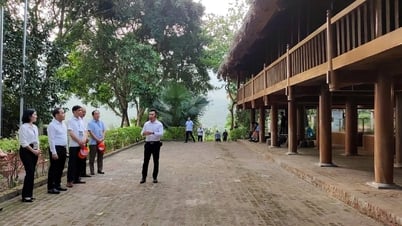
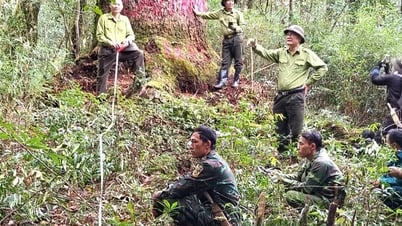
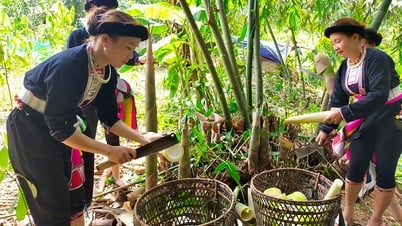



![[Photo] Party and State leaders visit former President Tran Duc Luong](https://vphoto.vietnam.vn/thumb/1200x675/vietnam/resource/IMAGE/2025/5/24/960db9b19102400e8df68d5a6caadcf6)

































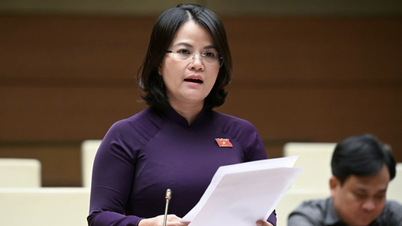
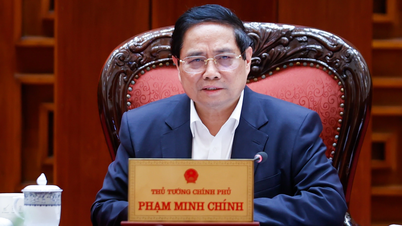












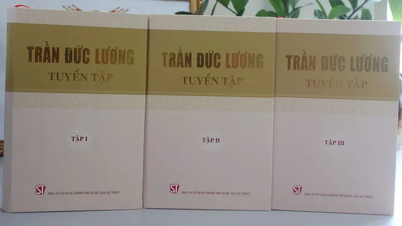
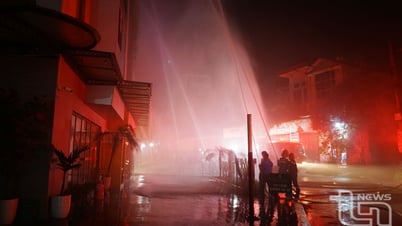












Comment (0)